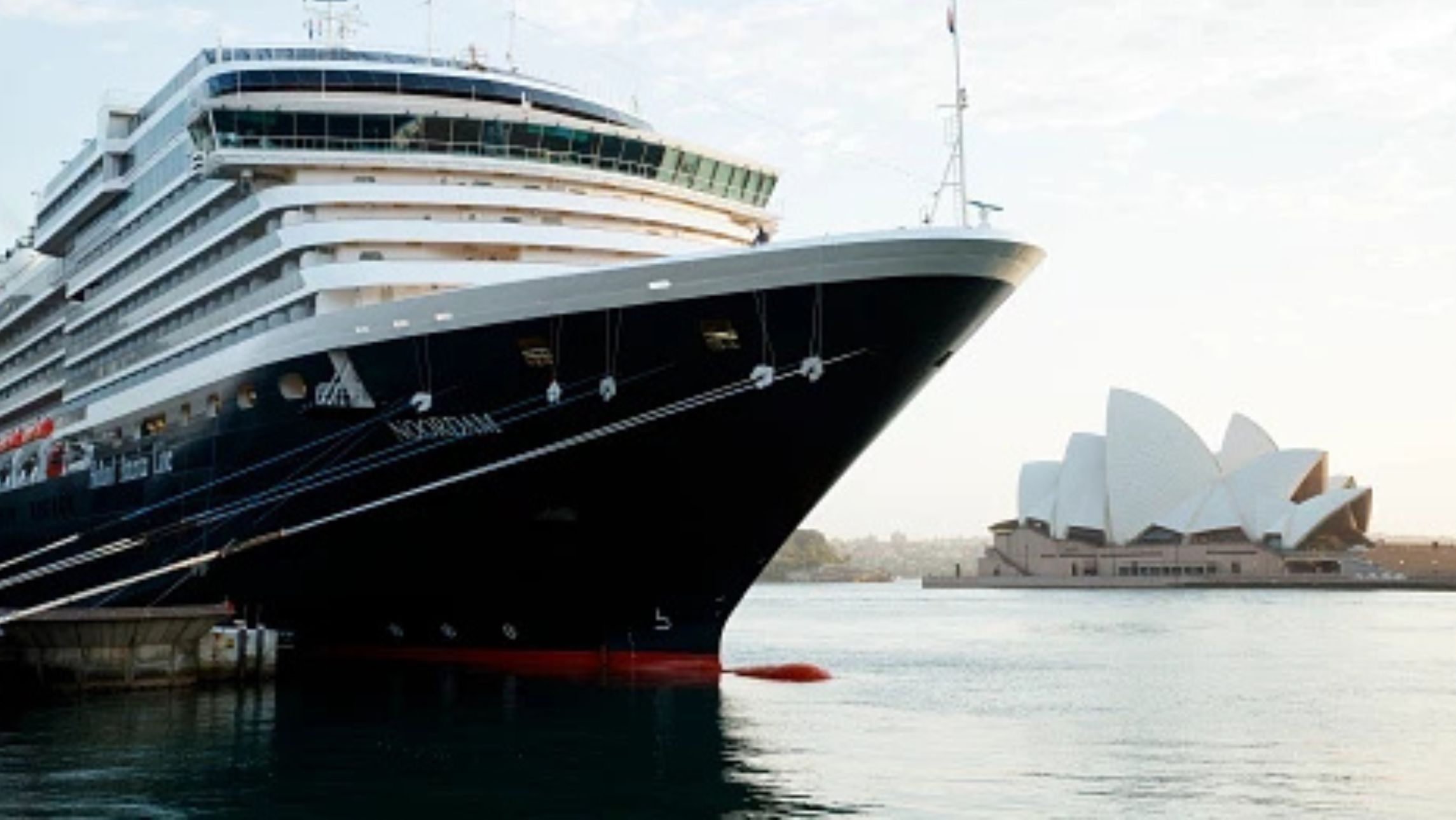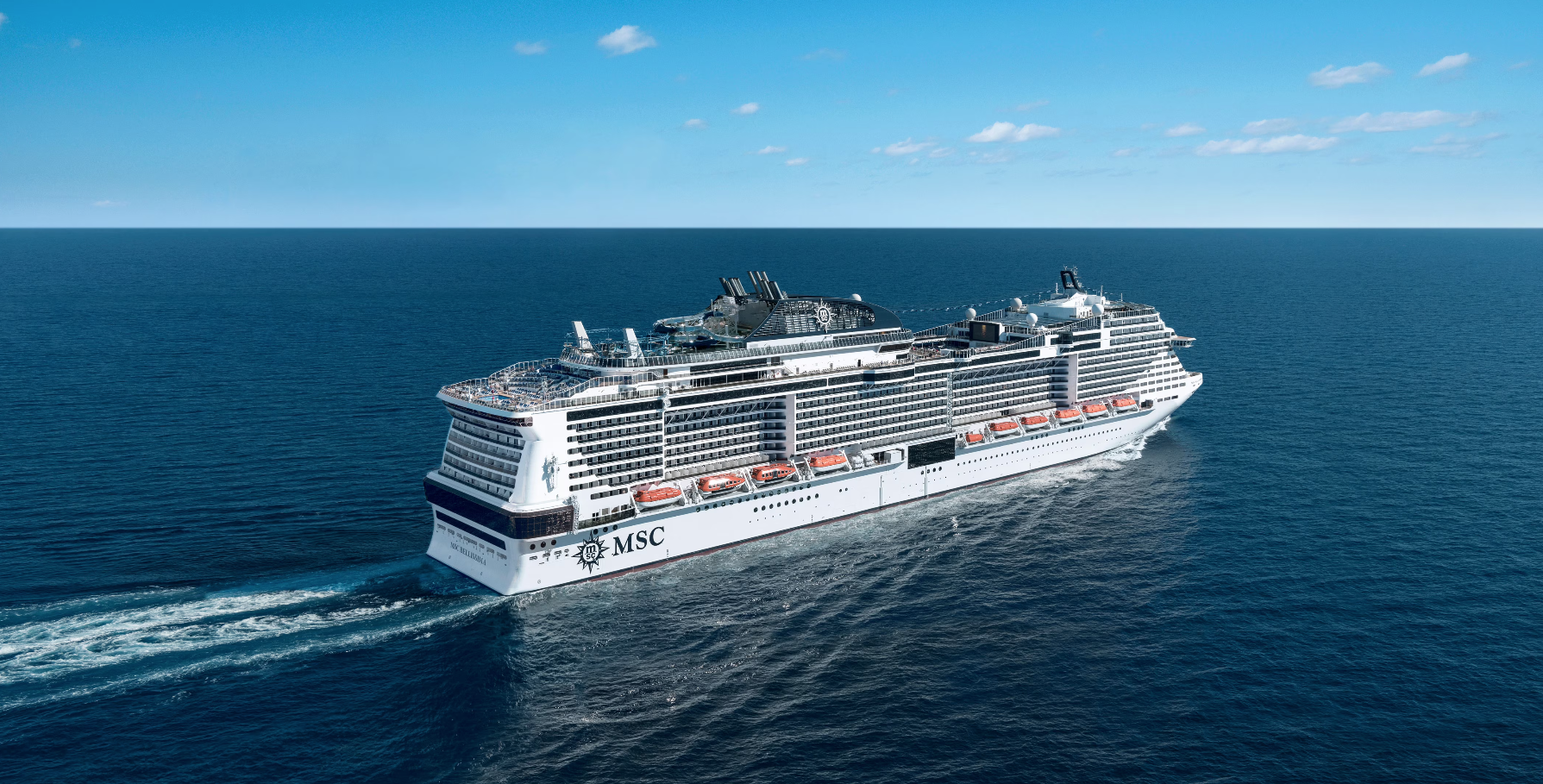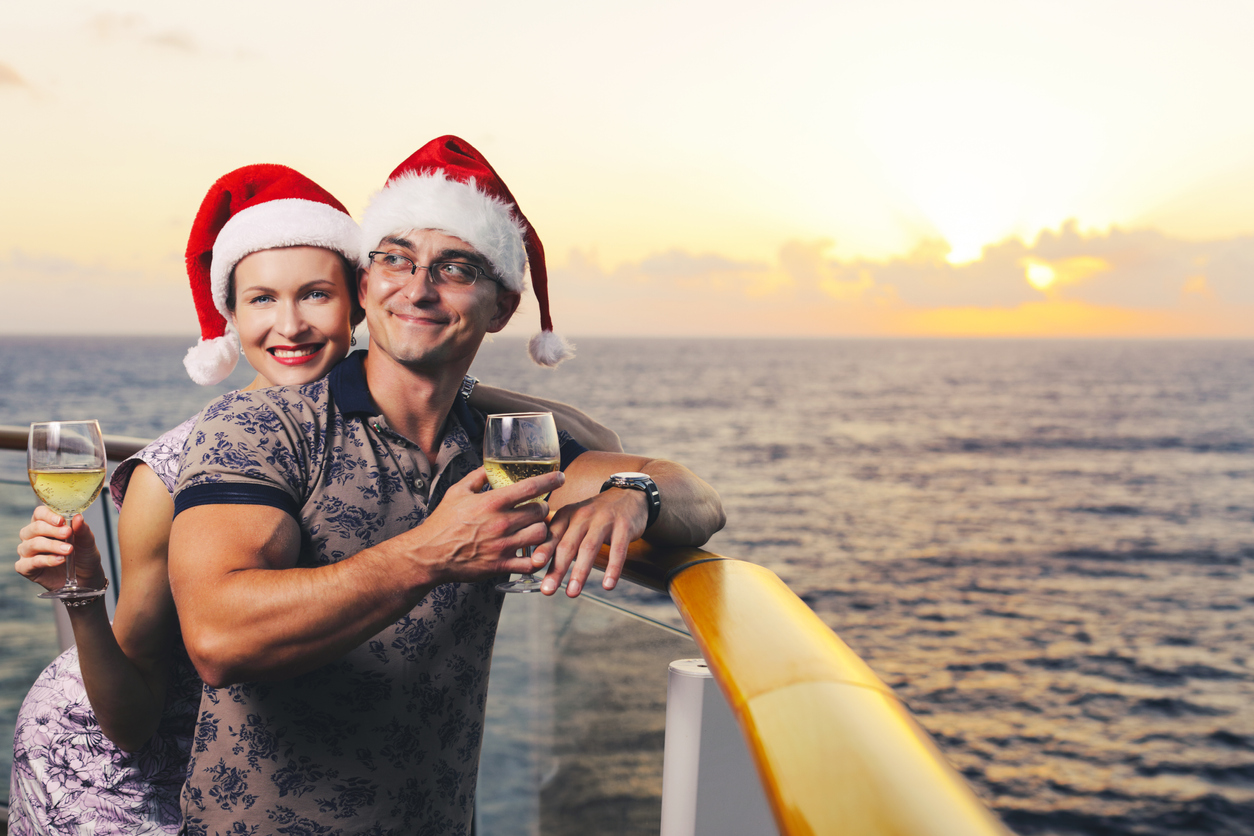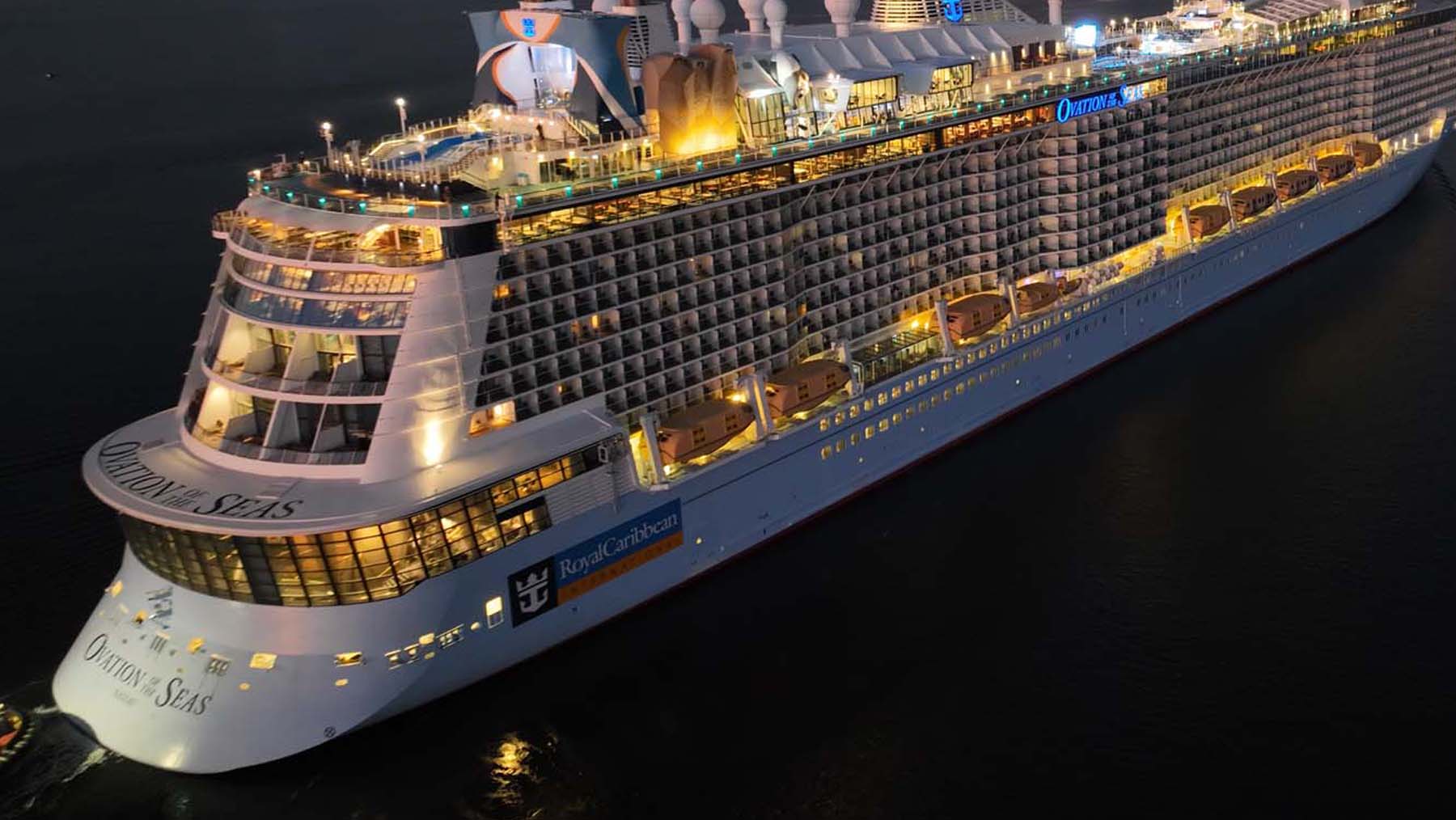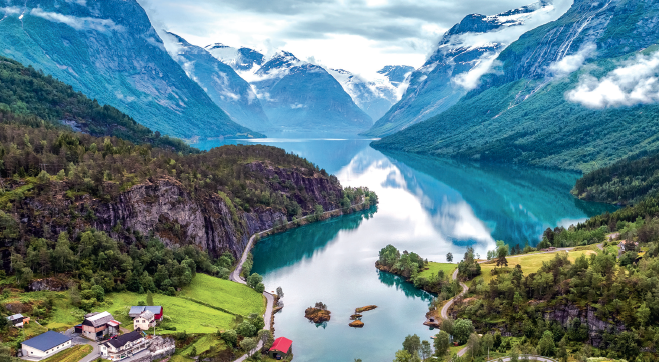Holland America Line
If you’re the type of cruiser who prefers slow mornings over packed itineraries, and culture over chaos, Holland America Line might just be your kind of cruise. With over 150 years of cruising experience, Holland America has carved out its own niche. It's the cruise line people come back to when they are looking for something a bit more refined, but still fun and without the hefty price tag.
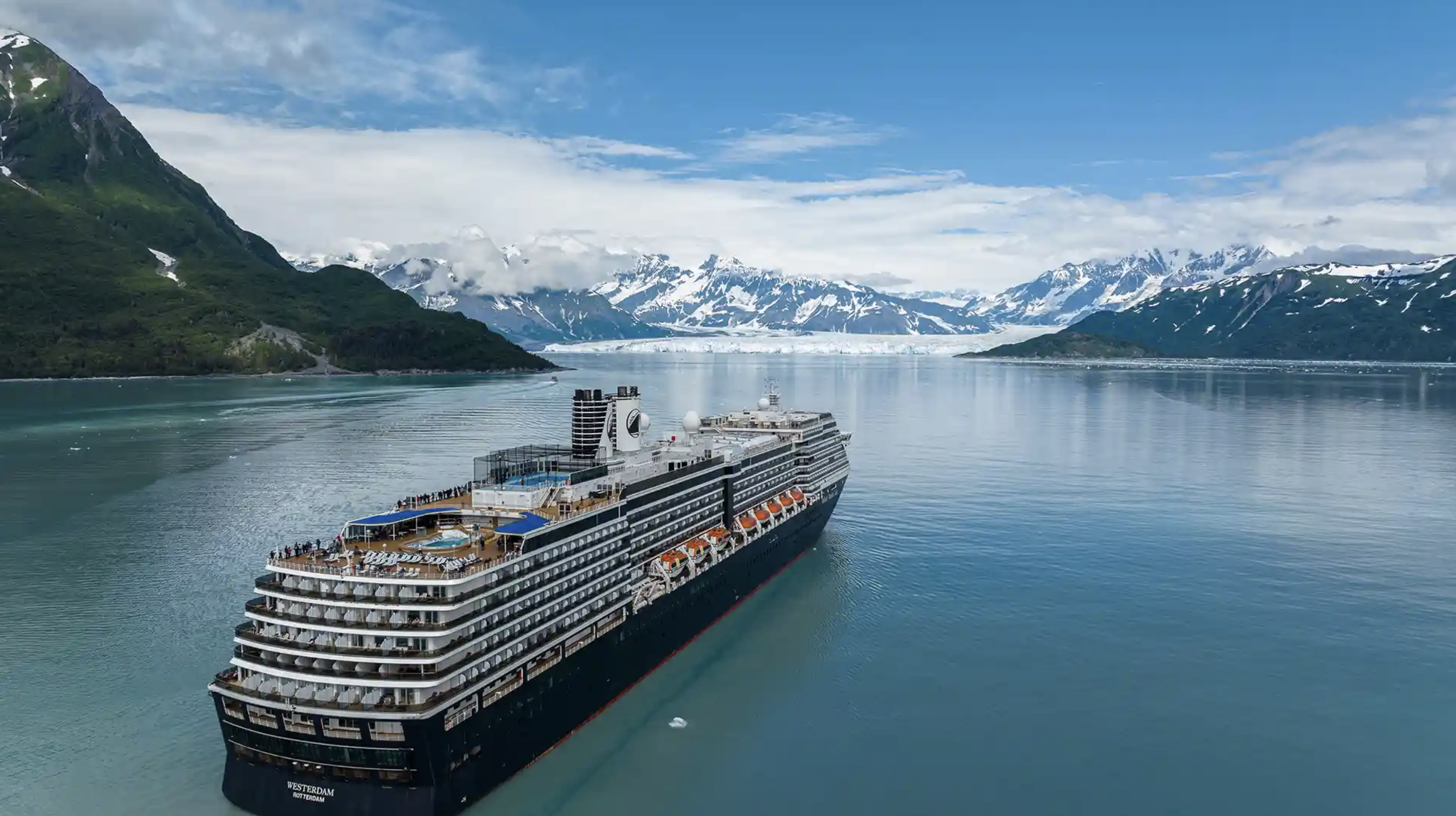
Holland America Line has everything from scenic short getaways to massive globe-trotting voyages, and the ships themselves are just the right size. Whether you’re travelling solo, with your partner, or bringing the whole family along, here’s everything you need to know about sailing with the cruise line that pioneered Alaska.
Holland America Line Ships
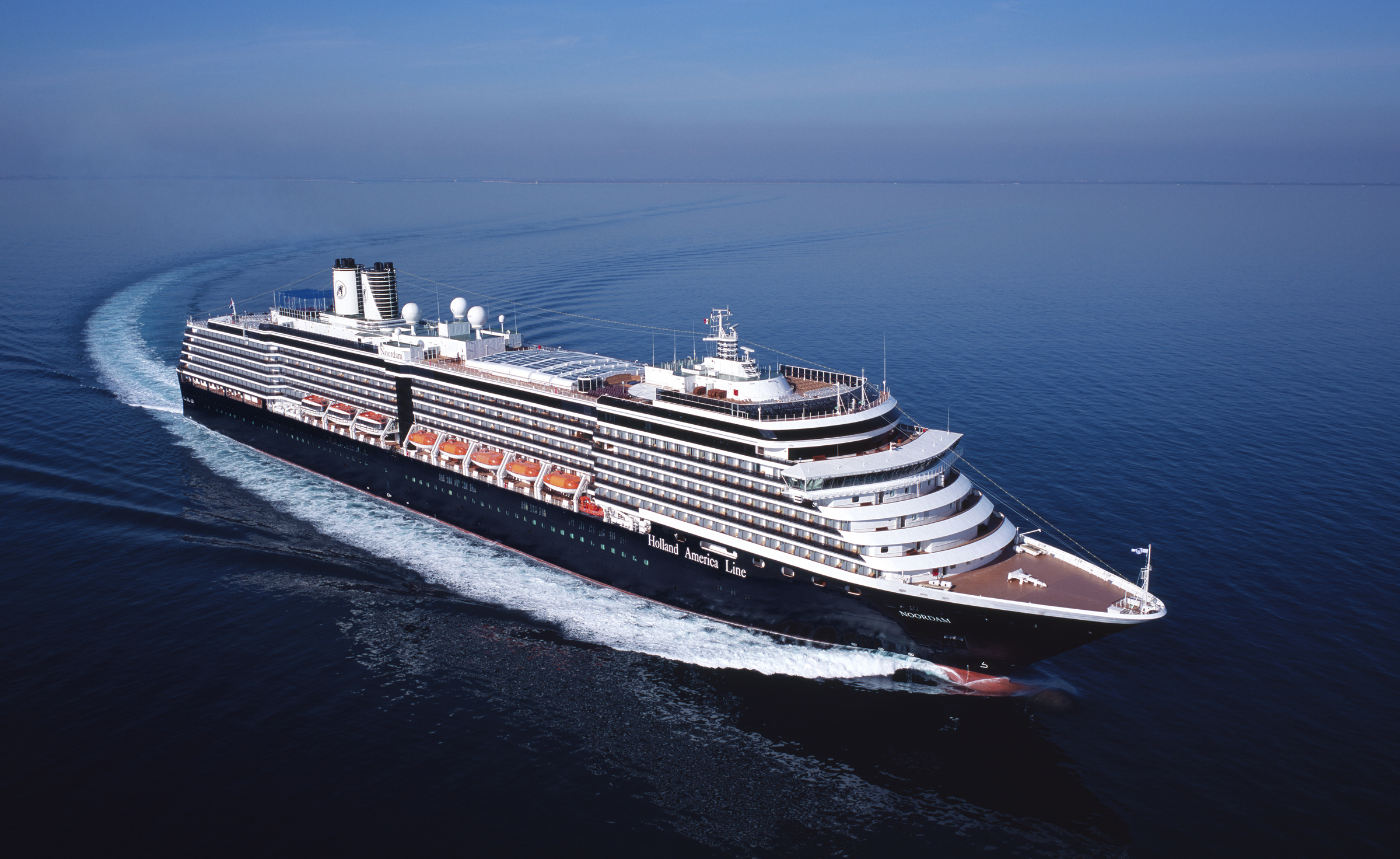
MS Noordam
This Sydney-homeported lady of the sea spans 285.23 metres in length and 32.2 metres in width with a gross tonnage of 82, 318 and travels with the speed of 24 knots. It had its maiden voyage in February of 2006 via a 10-day Eastern Caribbean itinerary.
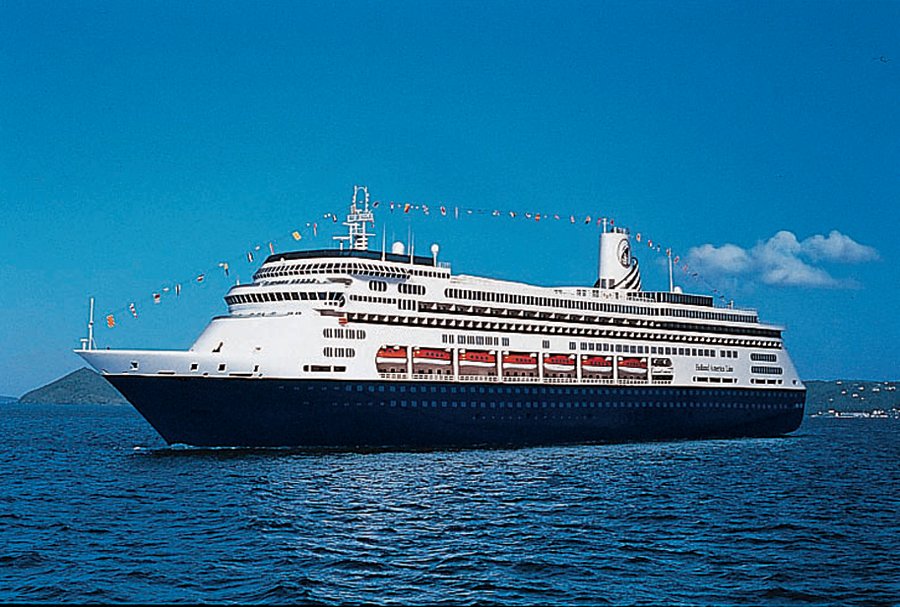
MS Zaandam
MS Zaandam was launched in 2000 and underwent refurbishment in 2005. The design theme is music and the ship is decked out with musical memorabilia and instruments. The 61,396 tonne vessel has 10 passenger decks and can carry 1,432 passengers and 561 crew.
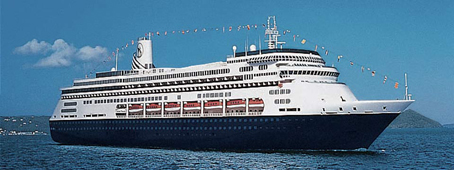
MS Volendam
MS Volendam was custom built in 1999 and refurbished in 2005. It has 10 passenger decks and can carry 1,432 passengers and 615 crew. This R-class Holland America Line ship has eight bars, two pools and a show lounge over two decks. The decor has a garden theme with floral patterns and fresh blooms displayed in various locations.

MS Rotterdam
MS Rotterdam was launched in 1997 and enhanced in 2009. The 61,849 tonne ship has 12 passenger decks and can carry 1,404 passengers and 600 crew. It has a bright, contemporary decor, elegant dining rooms, a $2 million art and antique collection and wide teak decks.

MS Nieuw Amsterdam
Launched in 2010, MS Nieuw Amsterdam celebrates the glamor and history of New York City with its decor and art collection. The 86,700 tonne ship offers a traditional cruising experience with a friendly and relaxed atmosphere and caters for families with specially designated areas for younger children and teenagers.
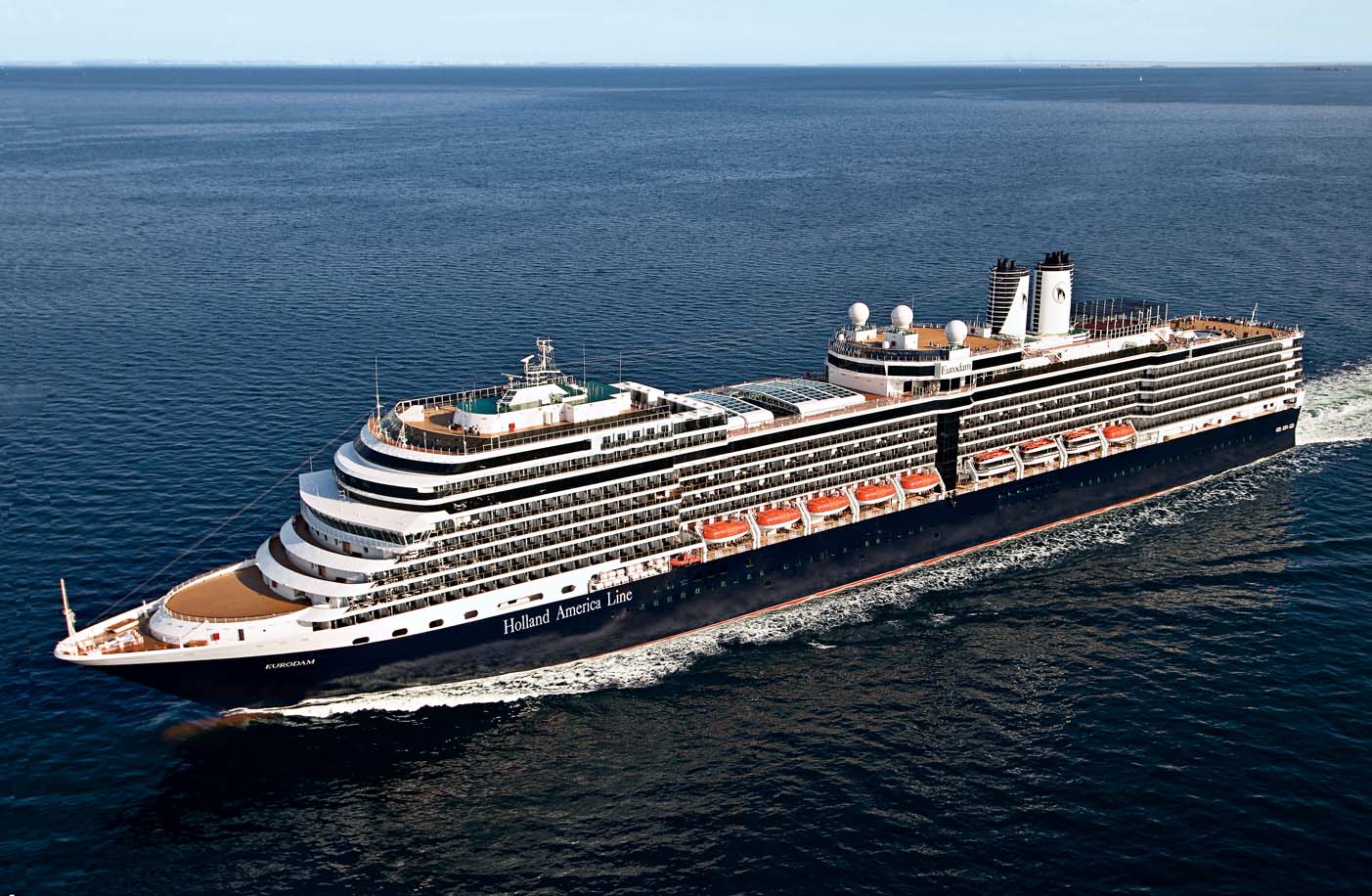
Eurodam
Built in 2008, MS Eurodam is the first of Holland America Line’s Signature-class cruise ships. The 86,273 tonne liner has 12 passenger decks and can cater for up to 2,104 guests, with 876 crew. In 2015, the ship received an upgrade as part of a $300 million fleet-wide enhancement.
Holland America’s fleet is on the smaller, more refined end of the cruise ship spectrum. You won’t find mega-ships with 6000 passengers here. These ships are built for a smoother, more personal experience.
Rotterdam is the newest kid on the block and brings a bit of modern flair to the fleet. It’s sleek, elegant, and filled with thoughtful touches, like the immersive World Stage theatre and gorgeous music-themed lounges.
Nieuw Amsterdam and Eurodam are also fan favourites. There are mid-sized ships that still manage to pack in plenty of features without feeling crowded. MS Noordam, which often sails Australia and New Zealand, is a solid pick for local cruisers.
Each ship feels like a proper floating hotel: not too big, not too flashy, just right.
Why Holland America?
Holland America has mastered the art of cruising well. It is not over-the-top or underwhelming, but it is consistently good across the board. What makes them stand out is the calm, unpretentious, and grown-up atmosphere. And there is a big focus on the music onboard as well as new food initiatives.
The ships are a sweet spot in size: big enough for variety, small enough to find your way around by day two. The crew is famously friendly (and remembers your name after one coffee order, which is frankly impressive). The destinations are carefully curated and often include places the bigger ships can’t reach.
Their onboard vibe leans more toward cultural enrichment and world-class dining than splash zones and zip lines, but that’s exactly the point. It’s a cruise line for people who travel because they love the journey just as much as the destination. And honestly, once you’ve done one, it’s pretty easy to see why folks keep coming back.
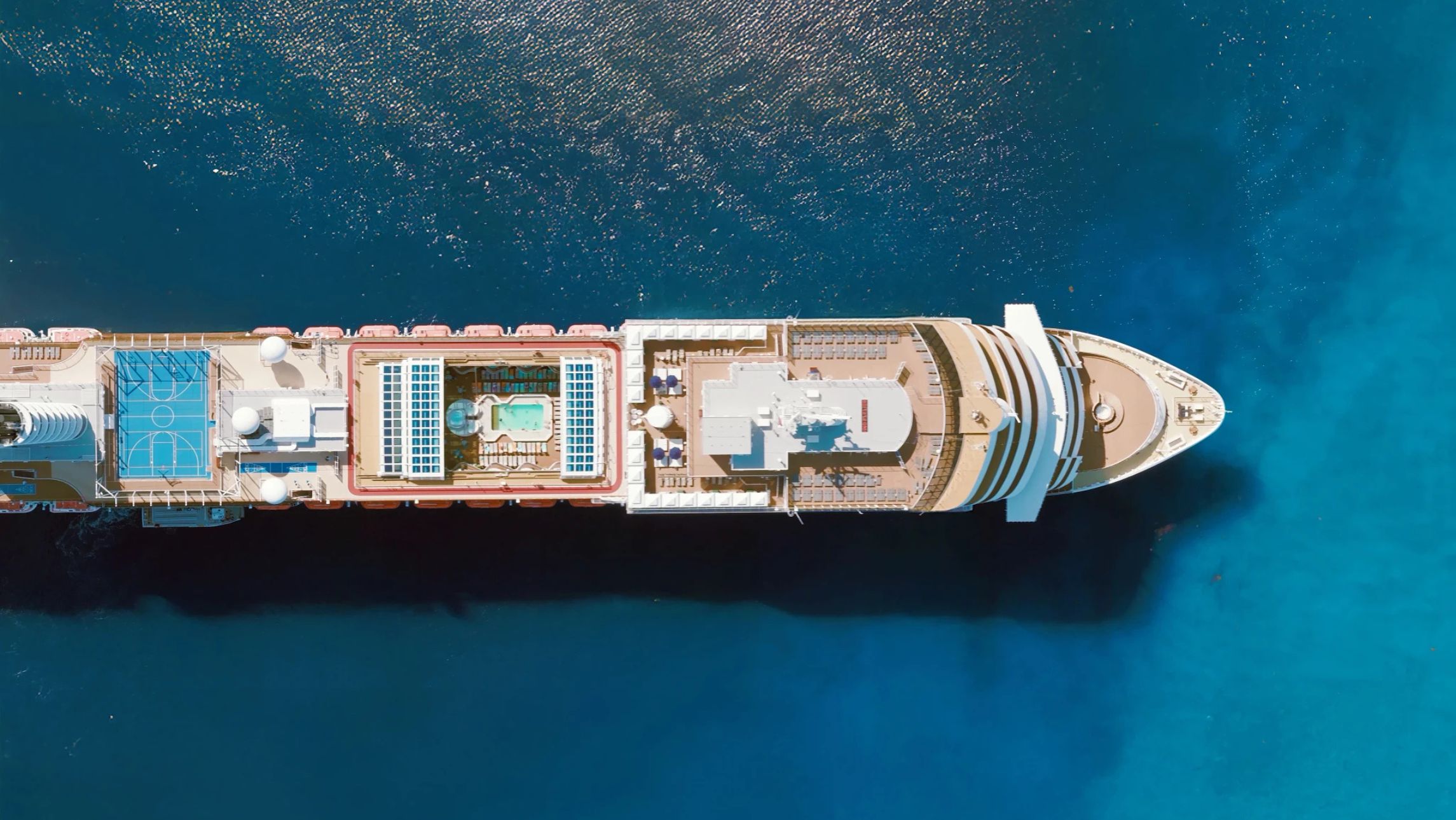
At Glance (Accommodation type, destination/ports)
Accommodation
Whether you’re the kind of cruiser who just needs a comfy bed and somewhere to stash your suitcase, or you’re all about that “treat yourself” life with a balcony and a bit of extra space, every Holland America cruise ship has got you sorted.
They’ve got five main cabin types across the fleet, and while the layout might vary slightly ship to ship, the basics are pretty consistent:
- Interior Staterooms – These are your no-window, no-fuss cabins. Great if you're on a budget or just need a place to crash between port stops and pool time.
- Ocean View – Comes with a window or porthole, so you can get a bit of natural light and sneak a peek at the scenery without going full verandah.
- Verandah Staterooms – This is where the magic happens: your own private balcony to sip coffee on in the morning or watch the sun set with a wine in hand.
- Vista and Signature Suites – Bigger rooms, better views, and a few added perks like nicer bathrooms, more storage, and priority boarding.
- Neptune and Pinnacle Suites – These are the top-tier options if you’re going all out. Think walk-in wardrobes, whirlpool tubs, and access to the exclusive Neptune Lounge.
No matter which cabin type you go for, they all come with the essentials: comfy bedding, decent storage, good showers, and thoughtful little touches like Elemis toiletries and room service that doesn’t cost extra.

Destinations
Alaska
Caribbean
Australia
New Zealand
fjords of Norway
Mediterranean
North America
Asia
For the 2025/26 season, the Holland America ships are casting a wide net. Think Alaska’s glaciers, the warmth of the Caribbean, the cobbled laneways of Europe, and plenty of close-to-home cruises around Australia and New Zealand.
Alaska kicks off around April 2025, with six ships rotating through routes that let you witness calving glaciers and maybe even spot a bear or two (from a safe distance, of course). Then there’s the Caribbean—sun-soaked beaches, steel drum vibes, and stops at Half Moon Cay, their own private slice of paradise. It’s a favourite for a reason.
Over in Europe, you’ve got everything from lazy Mediterranean meanders to the windswept fjords of Norway. Some itineraries are quick dashes; others are slow and steady, the kind where you unpack once and wake up in a new country every other day.
Closer to home, the MS Noordam is doing the rounds in Australia and New Zealand. Expect a mix of city ports like Sydney and Auckland, paired with scenic stunners like Fiordland. And if you’re feeling bold, the Grand Voyages go all in: months at sea, multiple continents, and stories to dine out on for years.
What’s Included?
Your cruise fare gets you the important stuff: your cabin, main dining options, live entertainment, activities like trivia or dance classes, and use of the pools and gym. Tea, coffee, water, and juices are all included, too.
What’s not included? Specialty dining, alcohol, shore excursions, Wi-Fi, and spa treatments. But you can bundle a few of those together with one of their packages (more on that below), which can save you a bit of coin if you plan to go all in. In short, you’re not paying every five minutes, but it’s worth checking what’s covered before your trip.
Cruise Line Packages
Cruise extras can add up fast. But Holland America’s “Have It All” package is one of those rare deals that actually lives up to the name. Instead of nickel-and-diming you for every cocktail, show, and snack, they’ve bundled up the stuff most people actually want: shore excursions, drinks, Wi-Fi, and specialty dining. It’s not free, obviously, but if you were going to splash out anyway, this saves you a few hundred bucks compared to paying piece by piece.
They also offer themed voyages every now and then. These are culinary cruises with guest chefs, music-themed trips, that kind of thing. So if you’re after something a bit different, it’s worth keeping an eye out for those.
Dining Experiences
Holland America takes food seriously. Most people start in the main dining room. It is included in your fare and feels a bit fancy without being intimidating. Menus change daily and swing between classics and regional specials depending on where you’re cruising.
When you’re up for something special, the Pinnacle Grill is the ship’s steakhouse with its big, juicy cuts of meat, fresh seafood, and a killer wine list. There is also Tamarind, their Asian fusion restaurant. You’ll find dishes inspired by Thailand, China, Japan, and Malaysia with plenty of sushi, satay, and seafood.
Rudi’s Sel de Mer brings French flair with dishes like lobster bisque and salt-crusted fish, all in a brasserie-style setting. There’s also Canaletto, their take on Italian, which is a bit more casual but still worth dressing up for. Expect proper pasta, rich sauces, and a couple of spritzes if you ask nicely.
For something quick and easy, head to Lido Market, which is more than just your average buffet. It’s got stations where you can grab salads, sandwiches, hot dishes, and desserts without the usual food-court chaos. Or hit up Dive-In by the pool for burgers, dogs, and fries that are dangerously good.
If you’re cruising on one of their newer ships, you might stumble across Morimoto by Sea, a new addition by Iron Chef Masaharu Morimoto. It’s only on select ships for now, but if it’s onboard, book it early. It’s proper high-end Asian cuisine with a twist.
Other casual spots include the New York Deli & Pizza (surprisingly great for a midnight snack), and the Grand Dutch Café, which is great for coffee, beer, and Dutch snacks like bitterballen. It’s quirky in the best way. And when you can’t be bothered leaving your cabin, room service is 24/7 and most of it’s free.

The Cabin Experience
If you’re after glitz, neon lights and mirror-lined rooms, Holland America Line probably isn’t your vibe. Their accommodation leans more toward timeless comfort with warm tones, plush bedding, and a bit of old-school elegance. Nothing over the top, but everything you need for a proper relaxing break.
Even their entry-level interior cabins are roomy by cruise standards and come with all the essentials: a decent bed, TV, good storage, and an ensuite that won’t leave you elbowing the walls. Move up to an ocean-view or verandah stateroom and you’ll get a bit more breathing room (plus natural light and sea views, of course).
In the suites, things get a little fancy with fresh flowers, extra space to stretch out, and access to the Neptune Lounge (a private chill-out space with snacks, concierge service, and strong espresso).
Also worth mentioning: some ships feature Lanai cabins with sliding glass doors that open right onto the promenade deck—perfect if you’re into easy strolls and fresh air.
Activities (Family, Kids and Couples)
For Families
Holland America might not have waterslides and cartoon mascots roaming the decks, but it does give families a relaxed, low-pressure kind of holiday. You can hang out by the pool, hit the live shows together, or take part in games and trivia nights that aren’t just aimed at the kids. There’s also plenty of downtime, which parents will appreciate more than they realise.
For Kids and Teens
There’s Club HAL for younger kids, which is split into age groups and offers everything from crafts and games to treasure hunts and movie nights. Teens get their own hangout space and slightly more independence, plus the usual lineup of video games, sports tournaments, and dance parties. It’s not flashy, but it keeps them entertained and gives you a bit of grown-up time.
For Couples
HAL is honestly one of the best cruise lines for couples who just want to relax together. Whether it's grabbing a cocktail and catching a sunset from the deck, slipping into the spa for a massage, or slow-dancing to live blues at B.B. King's, it’s got romance written all over it. If you’re celebrating something, it’s a pretty dreamy setup.
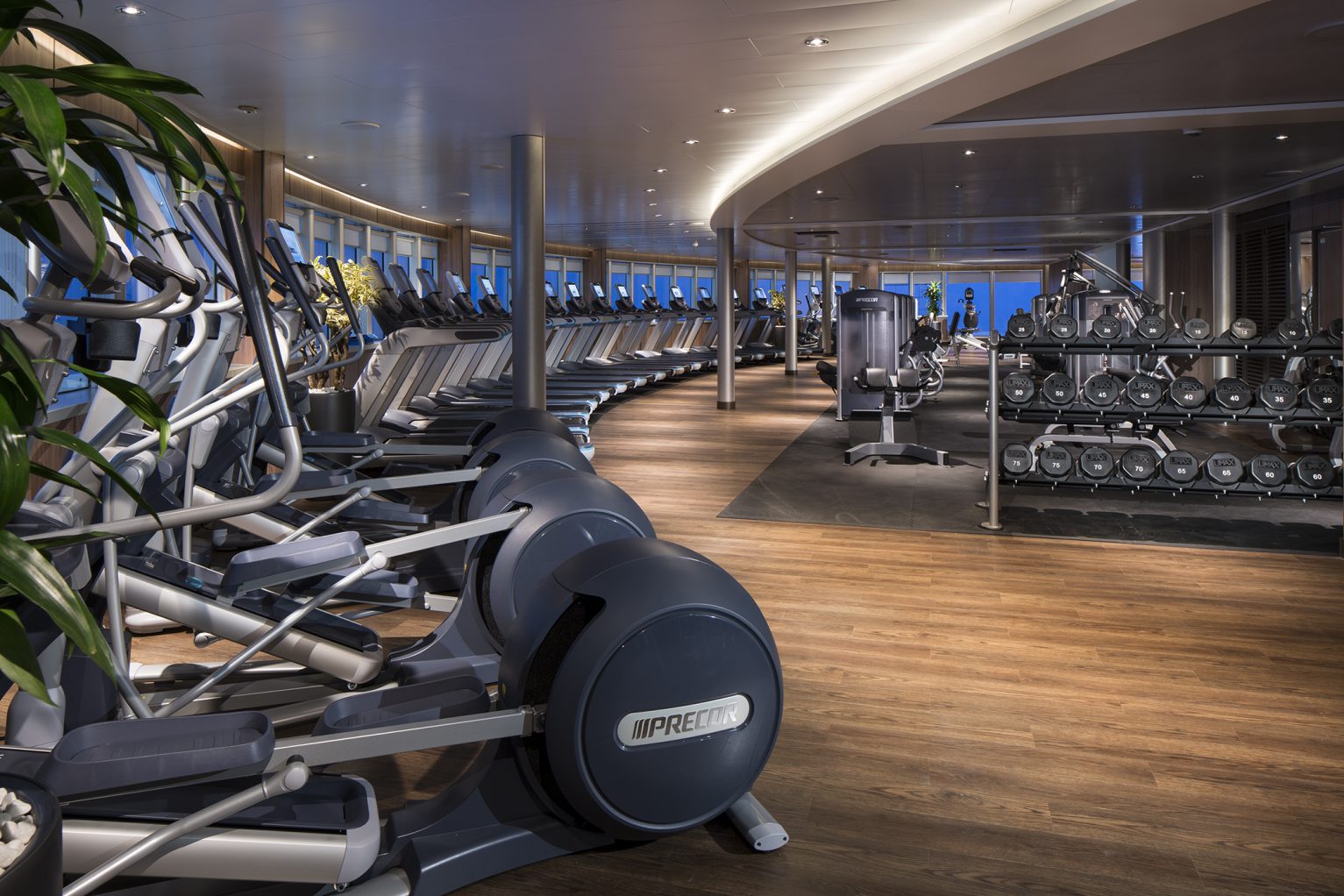
Loyalty Programs
Holland America’s Mariner Society is their way of saying cheers to returning cruisers. It’s a points-based loyalty program that rewards you for both cruise days and onboard spending, so the more you cruise, the higher you climb.
Perks start small—priority check-in and welcome-back gifts—but as you move up the tiers, you’ll unlock things like discounted shore excursions, free laundry (massive if you're on a long cruise), and exclusive events.
It’s not one of those programs where you need to cruise for decades to see any benefit, either. Even after your first trip, you start accumulating perks.
FAQs
Is there a dress code onboard?
Yep, but it’s not over the top. Daytime is super casual. You can wander around in your shorts and thongs without anyone batting an eye. At night, they ask for “smart casual,” which means leave the singlets in the cabin and throw on something a bit nicer. Maybe jeans or chinos and a polo for the blokes, a sundress or blouse and pants for the ladies. No one’s expecting tuxedos.
They do have “Gala Nights” once or twice per cruise, where you can dress up if you feel like it. Some people go full glam, others just make a bit more effort than usual.
Is it good for solo travellers?
Yes. Holland America has a bit of a reputation for being solo-friendly. Some ships have solo cabins (like on the Koningsdam). They also host meet-ups and social stuff for solo cruisers, so it’s easy to connect with other people if you’re up for it.
What kind of people cruise with Holland America?
It’s not a party crowd, that’s for sure. The vibe’s more relaxed and grown-up. You’ll find a lot of couples, retired travellers, solo cruisers, and some families (usually with older kids). The crowd tends to be well-travelled and here for the destinations, the food, and a bit of live jazz. If you’re into exploring new places, good wine, decent conversation, and the occasional cooking demo or string quartet, this is your crowd.


